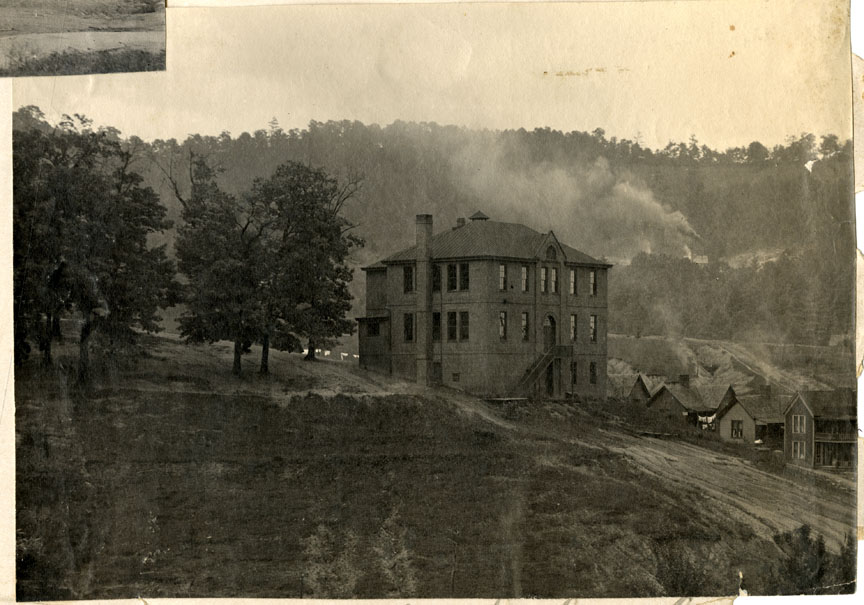On Jan. 13, 1888, The Asheville Citizen reported:
“Miss Sampson has been employed to assist Miss Foard in the first grade at the colored school. Two hundred and fifty children have been admitted to this school.
“Four hundred and thirty have been admitted to the white school, and fully one hundred and fifty more will be. This will be about forty per cent. of the school population.”
This announcement marked the start of Asheville’s first public schools. Prior to that time, private institutions were the norm. Both locations consisted of five grades. Professor P.P. Claxton was placed in charge of the operations and later named superintendent.
On May 15, 1888, The Asheville Citizen, alongside Mayor Herschel Springfield Harkins, the Board of Aldermen and the School Committee, visited the White Normal School. In the following day’s paper, it was noted that “[w]ant of time prevented our visit to the colored school[.]”
The May 16 article went on to report that first impressions of the white facility were quite pleasant, noting the power of discipline in creating order:
“A few months before, these children had rarely seen each other, had never been brought in contact, had brought here all the diverse habits of home or other schools, and were gathered together in a kind of instructive antagonism, if not unmanageable, at all events hard to mould into unity.
“But the power of love, of patience, or thorough knowledge of child nature, had reduced the chaos into order, had taught the children to conform to discipline and to respect and love it and at length to blend the mass into smoothness of form, and unity of movement in mind and body; and all this is the work of so short a time as to seem incredible if we did not know it to be true.”
But by the end of 1890, the many challenges and needs that came with operating public schools had become clear. In the Dec. 12 edition of the Asheville Daily Citizen, the paper featured excerpts from a speech delivered by Claxton. In it he declared, “One need of Asheville is for the parents to take more interest in the public schools.”
Other issues included inadequate buildings as well as the need for free textbooks, a school library and greater student support. “One day this week, when the streets were frozen, and the thermometer was to 24, some [students] came to school barefoot,” Claxton stated. “They are forced to stop in the winter and cannot come until spring.”
Claxton went on to note:
“[A]ccording to the report of the superintendent of public instruction, there was not over ten per cent. of the children of North Carolina in private schools last year. This means that four hundred thousand are dependent on the public schools for education, and that the masses are more interested in the public than in the private schools. There are 2,500 children of actual school age in Asheville and not more than 200 are in private schools. The remainder must be educated in some other way. The public schools ought to be and should be the best kinds of schools.”
But it was not all doom and gloom in 1890. Despite its poor conditions, the colored school of Asheville did find reason for celebration. That year marked the arrival of its new principal, Edward Stephens. The Aug. 30, 1890, edition of the Asheville Daily Citizen informed readers that Stephens was born in an English colony in South America.

The paper went on to report that by age 2, he was brought to England. Stephens would later attend schools in Paris, Switzerland and Germany. According to the article, he was fluent in French, German, Portuguese, Spanish, Dutch and Italian. His English, the paper noted, was spoken “with a slight French accent.”
Representative of the racial anxieties of the time, the newspaper made it a point to add that Stephens — an educated man of African descent — “had nothing whatever to do with politics and thinks it would be better for the negroes of the South if they paid less attention to such things.”
The article concluded:
“Mr. Stephens will at once begin the organization of the Y.M.C.A. for colored people. He started one in St. Louis last year, and hopes the people here will take an interest in the work so as to make it a success. He remarked yesterday to The Citizen that it had been his fortune to enjoy advantages which are denied to many of his people, and if he could do any good to his race he would be satisfied.”
Two years after Claxton’s speech for the advancement of the public school system, the Aug. 9, 1892, edition of the Asheville Daily Citizen informed readers that “Joyner & Leonard, the contractors, have completed the brick work on the Montford avenue [white] school building. They have also completed the Catholic Hill [black] school building and a good piece of work it is.”
Editor’s note: Peculiarities of spelling and punctuation are preserved from the original documents.



Important fact: Isaac Dickson was appointed to serve on Asheville’s first school board for one year. He was a former slave from Shelby, NC who became a prominent businessman and developer. He built much of the area around Eagle street, which was called Dicksontown during his lifetime. Source: Beneath the Veneer: African Americans in Western North Carolina by UNCA Professor Darin Waters.
Thanks for sharing Kelly. We’ve got some great articles on Isaac Dickson, as well. Check out https://mountainx.com/news/community-news/021512up-from-slavery-isaac-dickson-asheville-pioneer/ and https://mountainx.com/news/tuesday-history-isaac-dickson-and-the-ymi/.